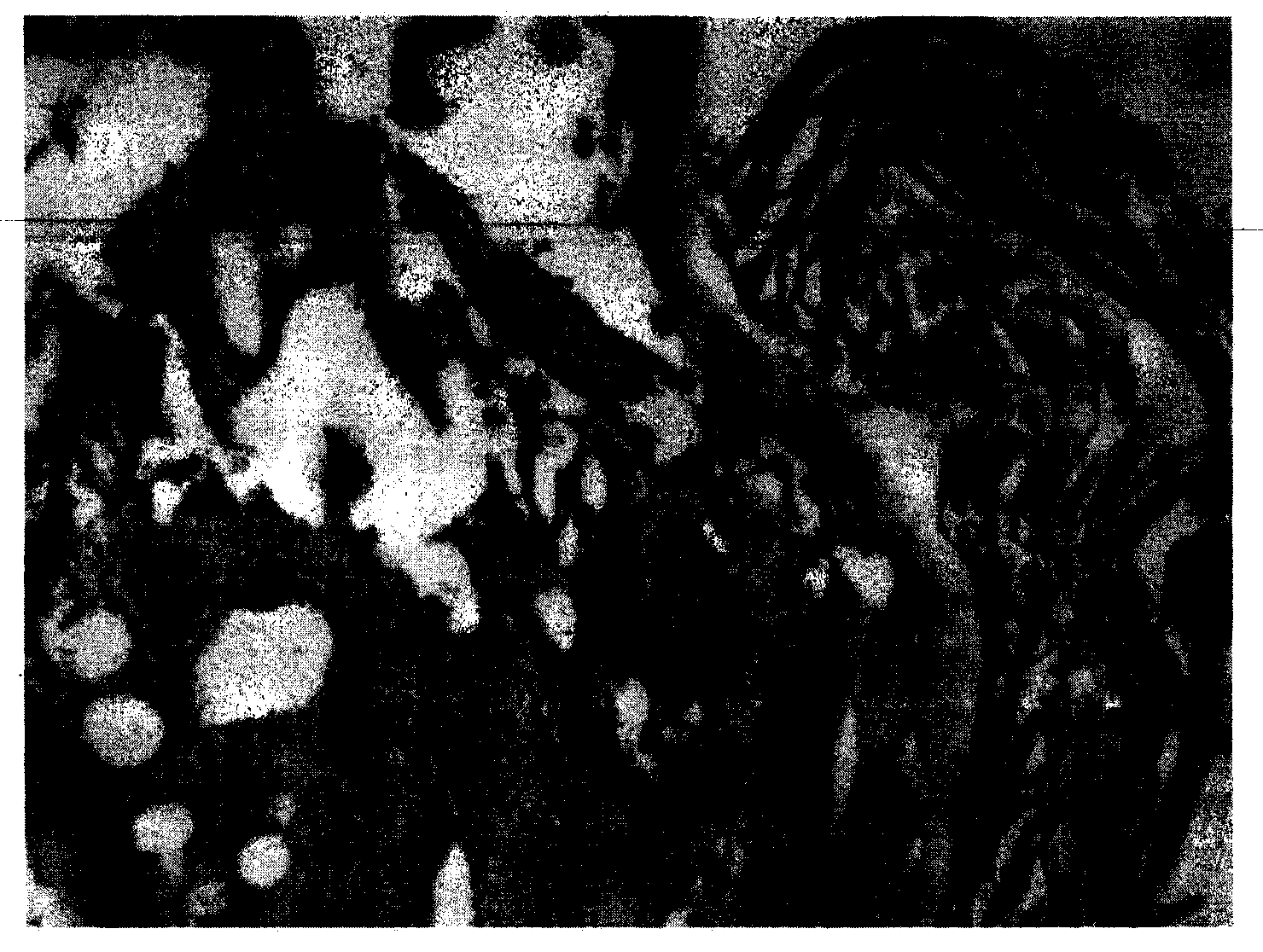Artificial cornea and its preparation method
A technology of artificial cornea and pore-forming agent, which is applied in medical science, prostheses, eye implants, etc., can solve the problems of poor compatibility between artificial cornea and tissue, achieve good biocompatibility and anti-infection, and promote fast healing effect
- Summary
- Abstract
- Description
- Claims
- Application Information
AI Technical Summary
Problems solved by technology
Method used
Image
Examples
preparation example Construction
[0018] The preparation method of the artificial cornea of this antibacterial activity comprises the steps:
[0019] Step 1, polyvinyl alcohol, chitosan derivative (this chitosan derivative can be 6-O-carboxymethyl chitosan, chitosan quaternary ammonium salt or chitosan), nano-phosphate, preparation Pore agent and organic solvent (dimethyl sulfoxide, DMSO for short) are mixed according to the mass ratio of 1-3:0.5-2:0.5-2:5-20:5-20, heated and stirred evenly, injected into the hollow mold, adjusting the thickness, molding, freezing at -20 to -40°C for 10-48 hours, thawing at room temperature for 2-6 hours, repeating the freezing-thawing process four times to obtain the scaffold material precursor;
[0020] Step 2. Mix polyvinyl alcohol, organic solvent and water uniformly in a mass ratio of 1-3:5-20:1-3, inject into the hollow part of the mold and spread it on the back of the scaffold material precursor to form a film Freezing at -20~-40°C for 10-48 hours, thawing at room ...
Embodiment 1
[0024] (1), mix polyvinyl alcohol, 6-O-carboxymethyl chitosan, nano tricalcium phosphate, sodium chloride and organic solvent DMSO in a mass ratio of 1:0.5:0.5:5:5, heat and stir Uniformly, pour into a hollow mold, adjust the thickness, and mold; freeze at -20°C for 48 hours, thaw at room temperature for 2 to 6 hours, repeat the freezing-thawing process four times, and obtain the scaffold material precursor. (2) Mix polyvinyl alcohol, DMSO and water uniformly in a mass ratio of 1:10:1, inject into the hollow part of the above-mentioned mold and extend it to form a film on the back of the scaffold material precursor; freeze at -20°C for 48 hours, thawing at room temperature for 2-6 hours, repeating the freezing-thawing process four times, so that the optical center part and the porous peripheral scaffold part form crosslinking, and form a non-water-permeable coating film on the back of the scaffold material precursor. (3) Soak the non-water-permeable coating film in water for 5...
Embodiment 2
[0026] (1), mix polyvinyl alcohol, 6-O-carboxymethyl chitosan, nano tricalcium phosphate, sodium chloride and organic solvent DMSO in a mass ratio of 2:0.5:1:10:15, heat and stir Uniformly, pour into a hollow mold, adjust the thickness, and mold; freeze at -20°C for 48 hours, thaw at room temperature for 2 to 6 hours, repeat the freezing-thawing process four times, and obtain the scaffold material precursor. (2) Mix polyvinyl alcohol, DMSO and water uniformly in a mass ratio of 2:10:2, inject into the hollow part of the above-mentioned mold and extend it to form a film on the back of the scaffold material precursor; freeze at -20°C for 48 hours, thawing at room temperature for 2-6 hours, repeating the freezing-thawing process four times, so that the optical center part and the porous peripheral scaffold part form crosslinking, and form a non-water-permeable coating film on the back of the scaffold material precursor. (3) Soak the non-water-permeable coating film in water for 5...
PUM
 Login to View More
Login to View More Abstract
Description
Claims
Application Information
 Login to View More
Login to View More - R&D
- Intellectual Property
- Life Sciences
- Materials
- Tech Scout
- Unparalleled Data Quality
- Higher Quality Content
- 60% Fewer Hallucinations
Browse by: Latest US Patents, China's latest patents, Technical Efficacy Thesaurus, Application Domain, Technology Topic, Popular Technical Reports.
© 2025 PatSnap. All rights reserved.Legal|Privacy policy|Modern Slavery Act Transparency Statement|Sitemap|About US| Contact US: help@patsnap.com

